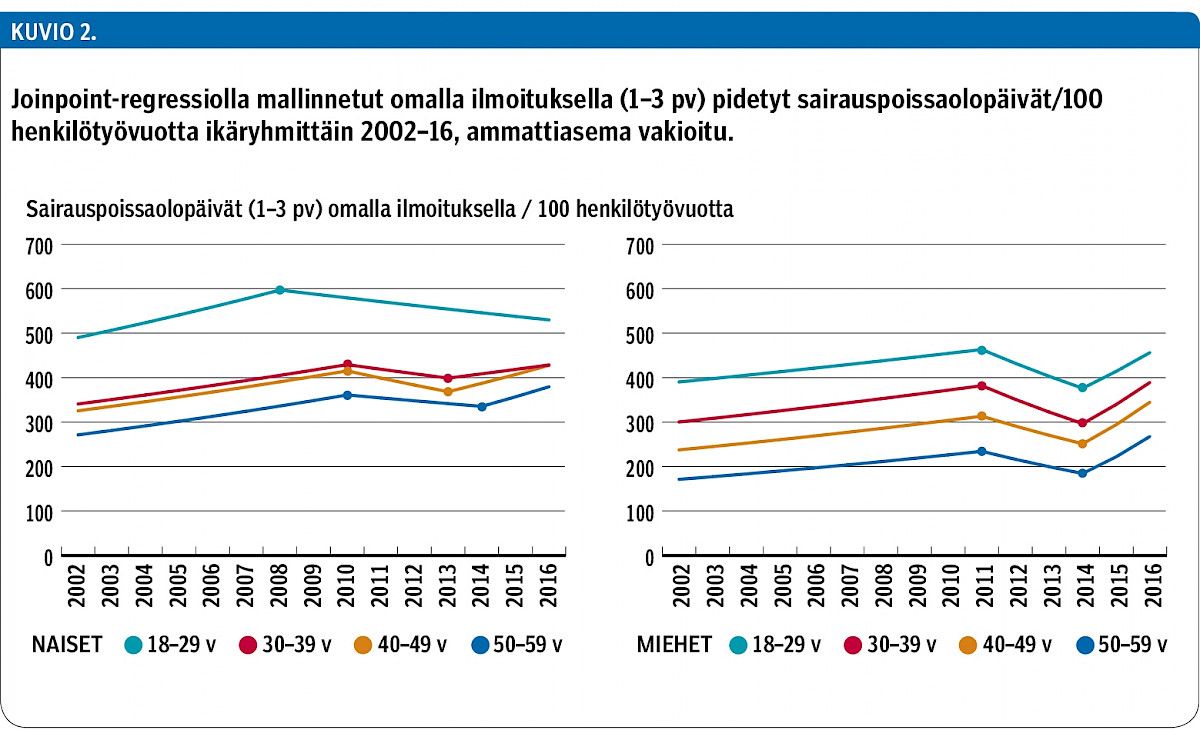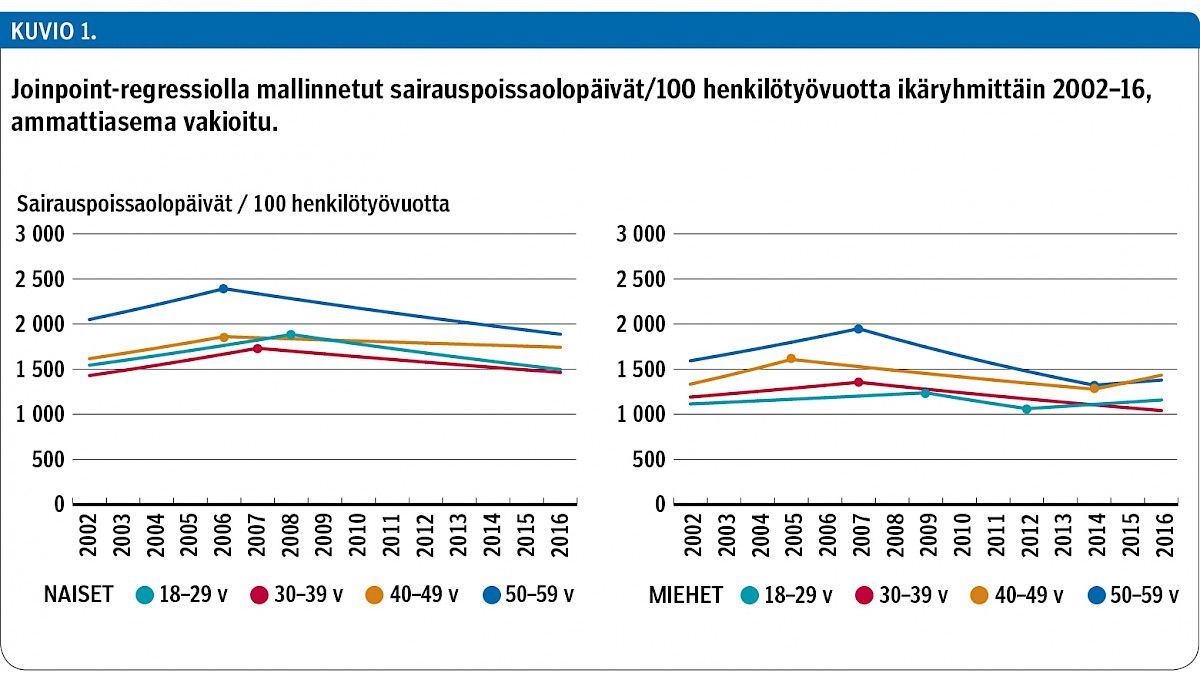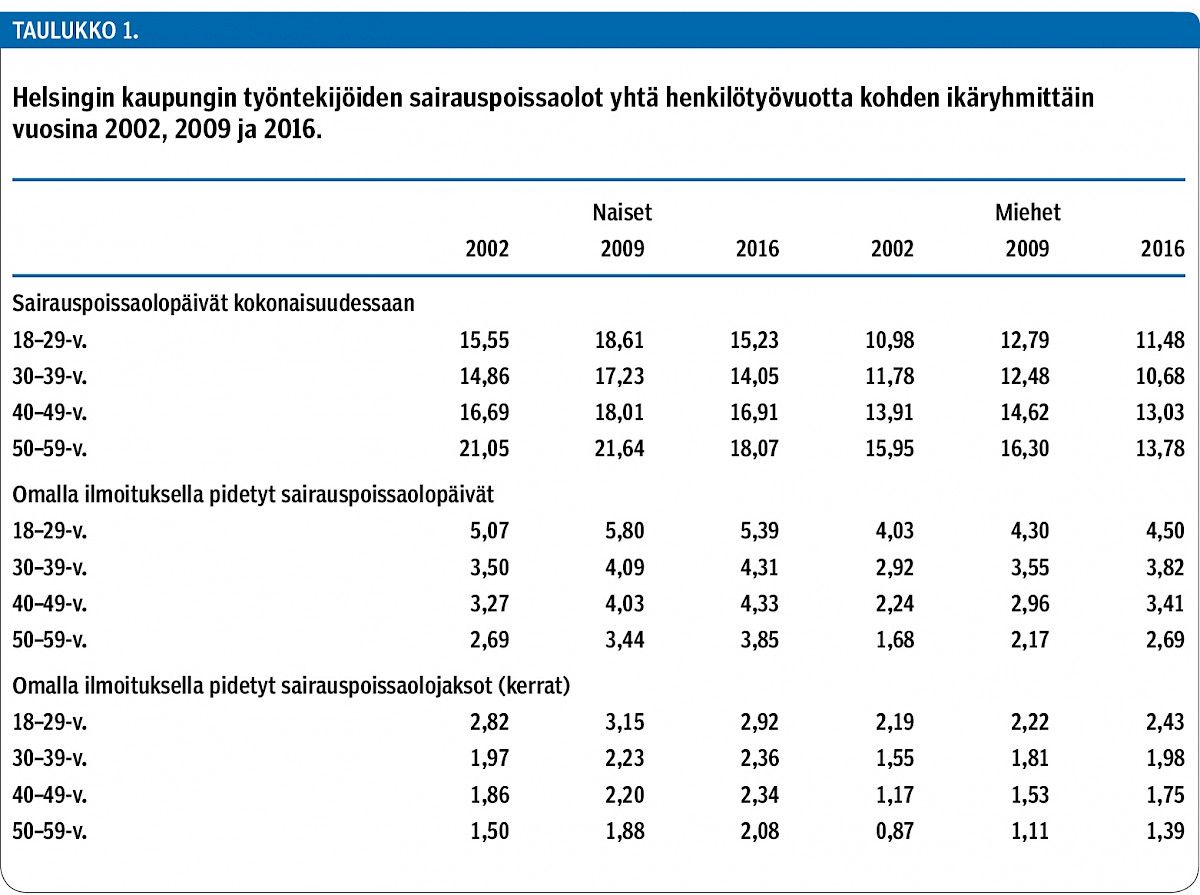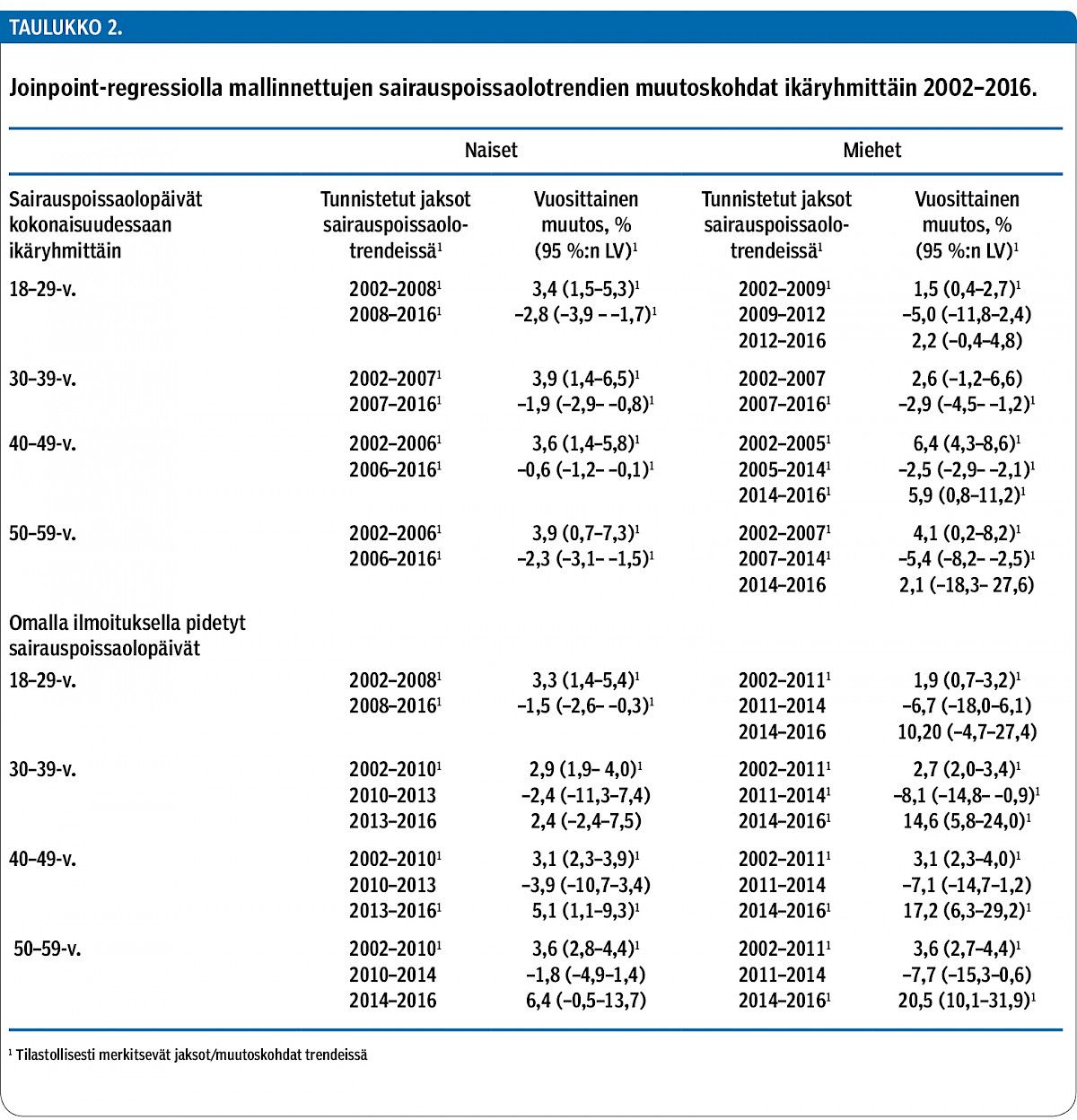Age-group differences in sickness absence among the employees of the City of Helsinki 2002−2016

Background
Knowledge on the development of recent sickness absence trends helps to target preventive measures and evaluate the efficacy of previous interventions. In this study we examined age-related differences in sickness absence trends from 2002 to 2016 among female and male employees of the City of Helsinki. Helsinki is the capital city and the largest employer in Finland.
Methods
All 18−29, 30−39, 40−49 and 50−59-year-old employees of the City of Helsinki from the years 2002−2016 were included in this study (n per year approximately 37,700). The outcomes were total sickness absence days and self-certified sickness absence days (lasting 1−3 days per sickness absence episode) per 100 person-years. Changes in the sickness absence trends were analysed with joinpoint regression. Women and men were analysed separately.
Results
There was an association between age and the amount of sickness absence. The oldest age group of 50−59-year-olds had the highest number of total sickness absence days. Among women, the trends among younger age groups were partially overlapping, but among men the age difference was more consistent. In the case of self-certified sickness absence days, the youngest age group, i.e. 18−29-year-olds had the highest number, and the oldest age group the lowest number of such absences among both women and men. There were significant changes in the trends during the study period. Among women, the total sickness absence days first increased during the beginning of the study period and then changed direction, showing a decrease in 2006/2008 in all age groups. Among men, there was also first an increase followed by a decrease, but the significance is less clear and the turning points vary from age group to age group. In addition, among men, there was a tendency towards an increase in total sickness absence days during recent years, which was not seen among women. The self-certified sickness absence days showed similar trends to the total days, but the turning points to decrease were later: in 2008/2010 among women and in 2011 among men. However, there was some statistically significant evidence among both genders that self-certified sickness absence days have been increasing again since 2013/2014.
Conclusions
Age-related differences in total sickness absence days and self-certified days of absence were evident; older employees had more total days, but younger employees had more self-certified days. The sickness absence trends have shown changes during the last 15 years, with an initial increase followed by a decrease. However, among men and in the case of self-certified days also among women it seems that the number of sickness absence days has increased in recent years. Young employees, especially women, are in need of preventive measures.

















